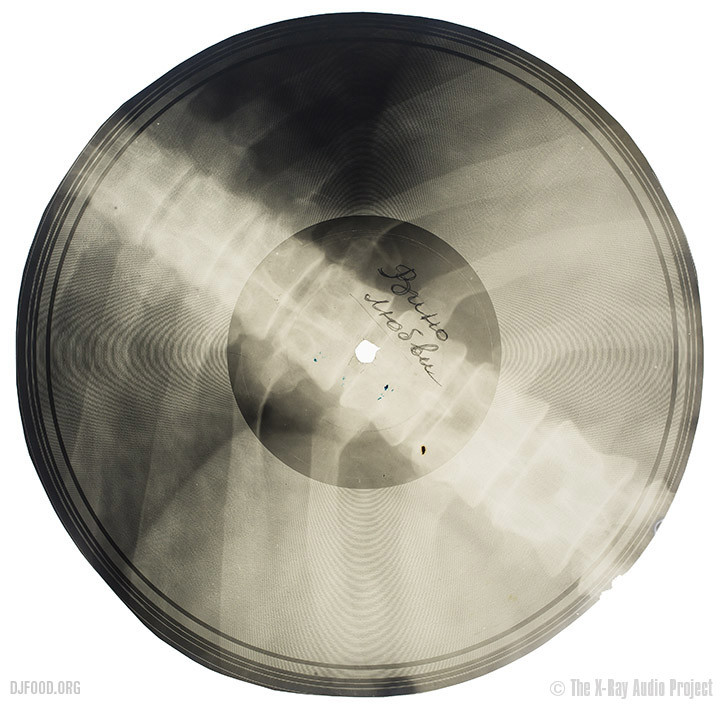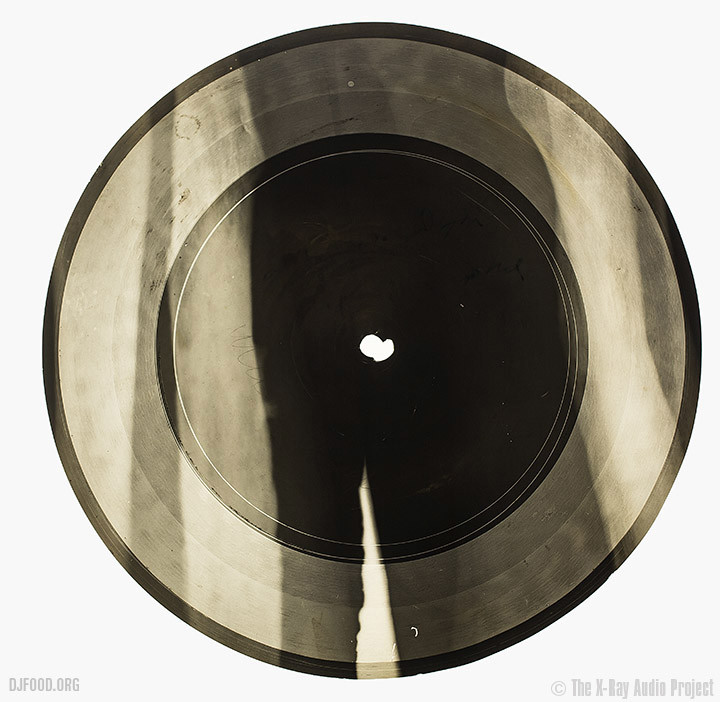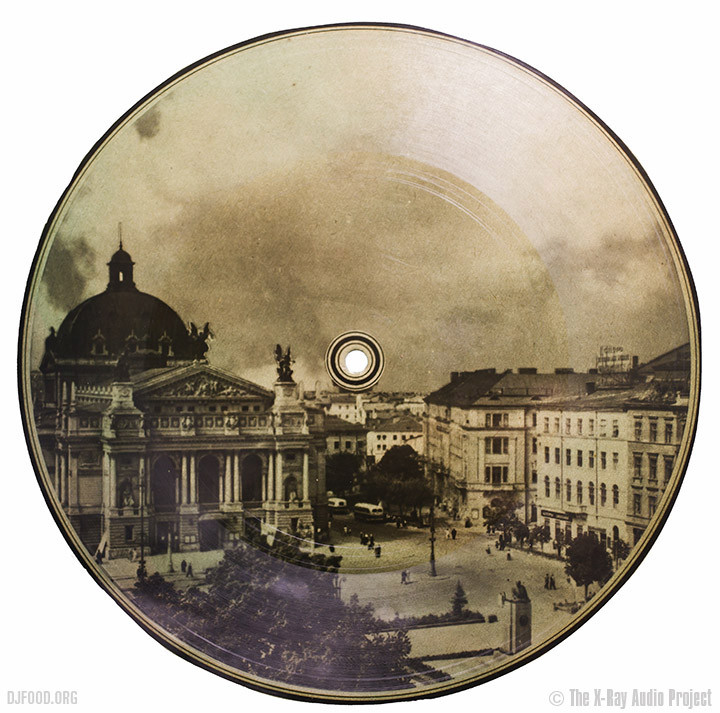This week I turn over the Flexibition to a very special guest, someone who is in the midst of researching and documenting some of the weirdest flexi discs in the world. Stephen Coates aka The Real Tuesday Weld has been collecting ‘bone discs’ from Russia for the last few years and, due to the subject matter with Halloween approaching, I thought he’d be the perfect choice to feature some of his collection.
“Some of the strangest flexis ever made were created secretly in the Soviet Union during the cold war era.
In a culture where the recording industry was completely controlled by the state, music-mad bootleggers used an extraordinary alternative means to spread the music they loved – they re-purposed used x-ray film as the basis for making records of forbidden music.
THE WINE OF LOVE (Вино любви) Pyotr Leshchenko
But why would a song like the ‘The Wine of Love’ on this ‘bone record’ be forbidden? Its innocent, romantic lyrics don’t seem anti-Soviet in any way, but emigre singers like Leshchenko who lived abroad outside the Soviet Union rather than returning to help the great march forward, were considered traitors and so all their repertoire became banned, though it remained hugely popular.
Even before the revolution of 1917, the arts were subject to some control in Russia and during the Soviet period, particularly from 1932, a censor decided what could be published, exhibited or performed. By the time the cold war kicked in in the late 1940s, a lot of music was very difficult to get hold of – until the x-ray bootleggers got to work. Originally they were really just music fans and audiophiles doing a bit of private business by copying records from before the war or the odd gramophone disc smuggled into the country, but up until around 1964, as the technique of making the bootlegs spread, something like a million of these ‘bone’ discs were cut. They weren’t pressed like conventional flexis but written, laboriously in real time at 78rpm with home made recording lathes, and so, incredibly, each is an edition of one – sounding and looking different from all the others.
They are nearly always single sided, very thin and the sound quality varies hugely depending on the skill of the bootlegger and the quality of the film. They didn’t last long but were cheap and sold pretty much like soft drugs are now – in dark corners or parks. Another big genre of music cut onto them was Russian music made inside the Soviet Union but which, as the censor tightened, had also became forbidden because it had certain rhythms (like the foxtrot or the tango) which were considered licentious or was in a style or with lyrics that were considered uncouth or shallow. Basically anything that the authorities didn’t like or was thought unhelpful in developing a communist state of mind was out.
But the official stuff on offer was often very boring and worthy and so of course, as well as the homegrown music they loved, young people in particular wanted to listen to cool Western music, which although completely banned, might be caught on the odd radio broadcast from Europe. So jazz, rock n roll, boogie woogie and latin dance tunes increasingly began to appear on bone bootlegs.
From the late 1950s, there was another sub-genre of soviet flexi bootlegs on ‘audio postcards’ or ‘sound letters’. These were picture disc recording blanks made for and sold in official shops – usually in tourist areas. People could go into these shops and pay to use a machine to record a novelty greeting for the folks at home or select one from a menu of official tunes to be pressed onto one of the picture discs. Of course, after hours or under the counter, much more interesting tunes could be cut and sold. These discs carried on being made right up until the 1970s.
But the ‘bone era’ of x-ray recordings ended around 1964, not because the authorities wiped it out or because of the brutal punishments they inflicted on the bootleggers when they caught them, but because in the more open climate of the sixties, ordinary citizens were allowed to have reel to reel tape recorders and immediately there was no longer any need for the laborious process, poor quality and unpredictable results of the x-ray flexis made by hand.
THE X-RAY AUDIO PROJECT
I first came across one of these discs a few years ago after I had been performing in Russia. Fascinated, I set up the X-Ray Audio Project with photographer Paul Heartfield to research, record, collect and publish their images and sounds and to tell the stories of the people who made and listened to them
For more information check out www.x-rayaudio.squarespace.com or my TED X talk”. (below)
The X-Ray Audio exhibition will be at Vivid Projects in Birmingham in November and will return to The Horse Hospital in London in December before traveling to further venues in 2016.
On December 5th I will be in conversation with Stephen at the same venue, showcasing various examples of the flexis I’ve been posting in the Flexibition, playing them and maybe even handing them around so that people can get a closer look. More details for ‘A Night at the Flexibition’ are here.
The book ‘X-RAY AUDIO – The Strange Story of Soviet Music on the Bone’ will be published in December by Strange Attractor Press and a Special Edition of 500 copies come with a flexidisc insert containing original Bone music.



